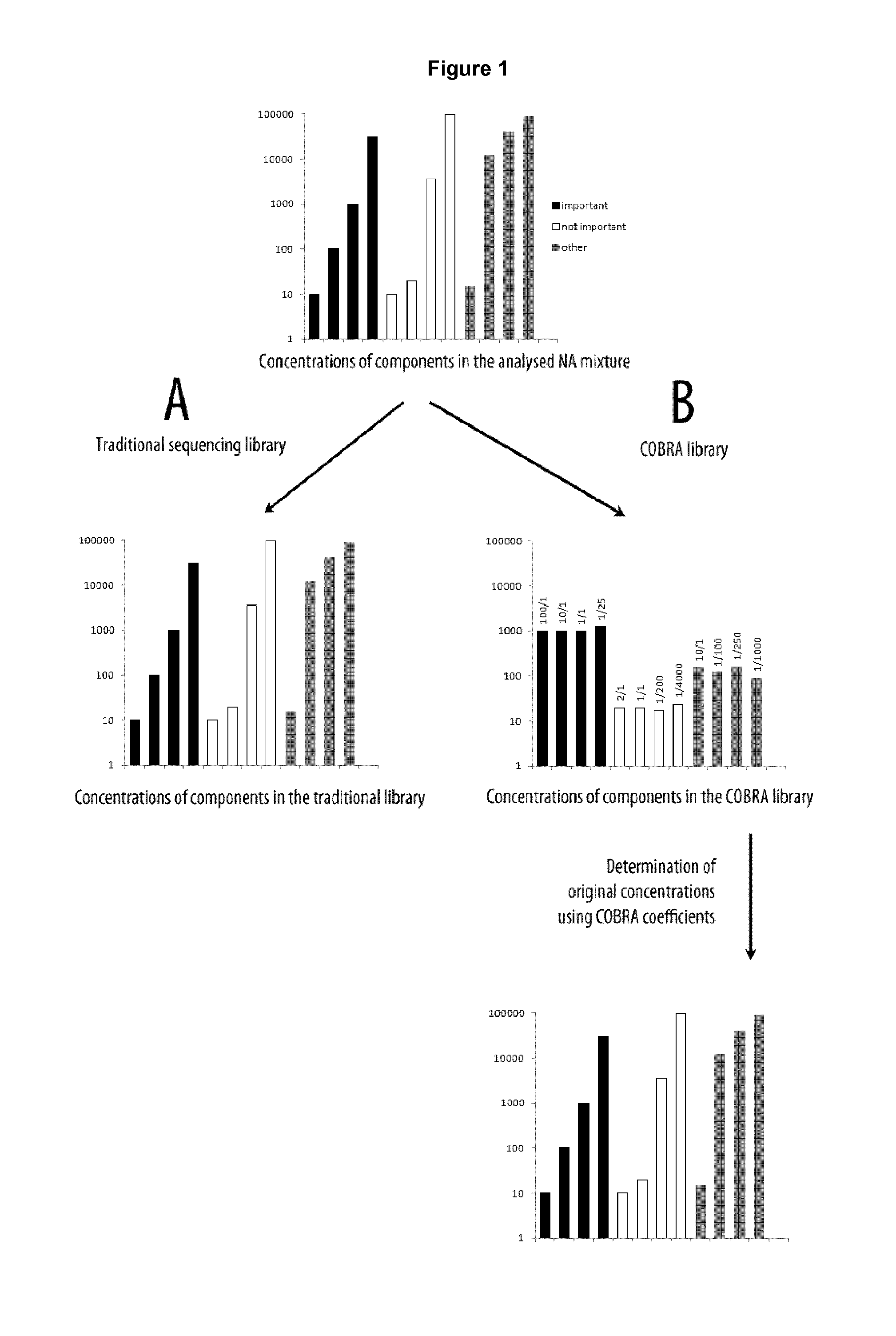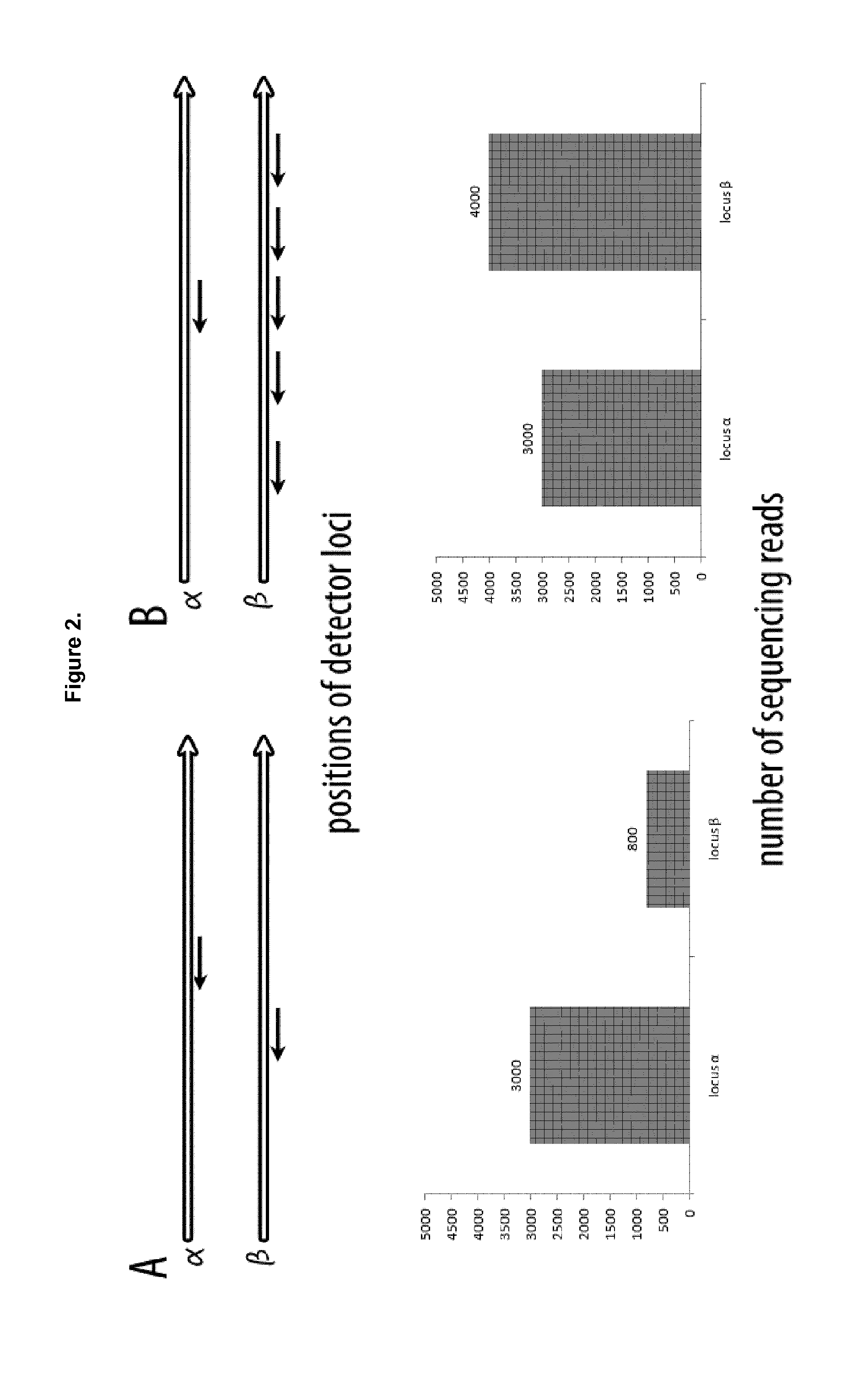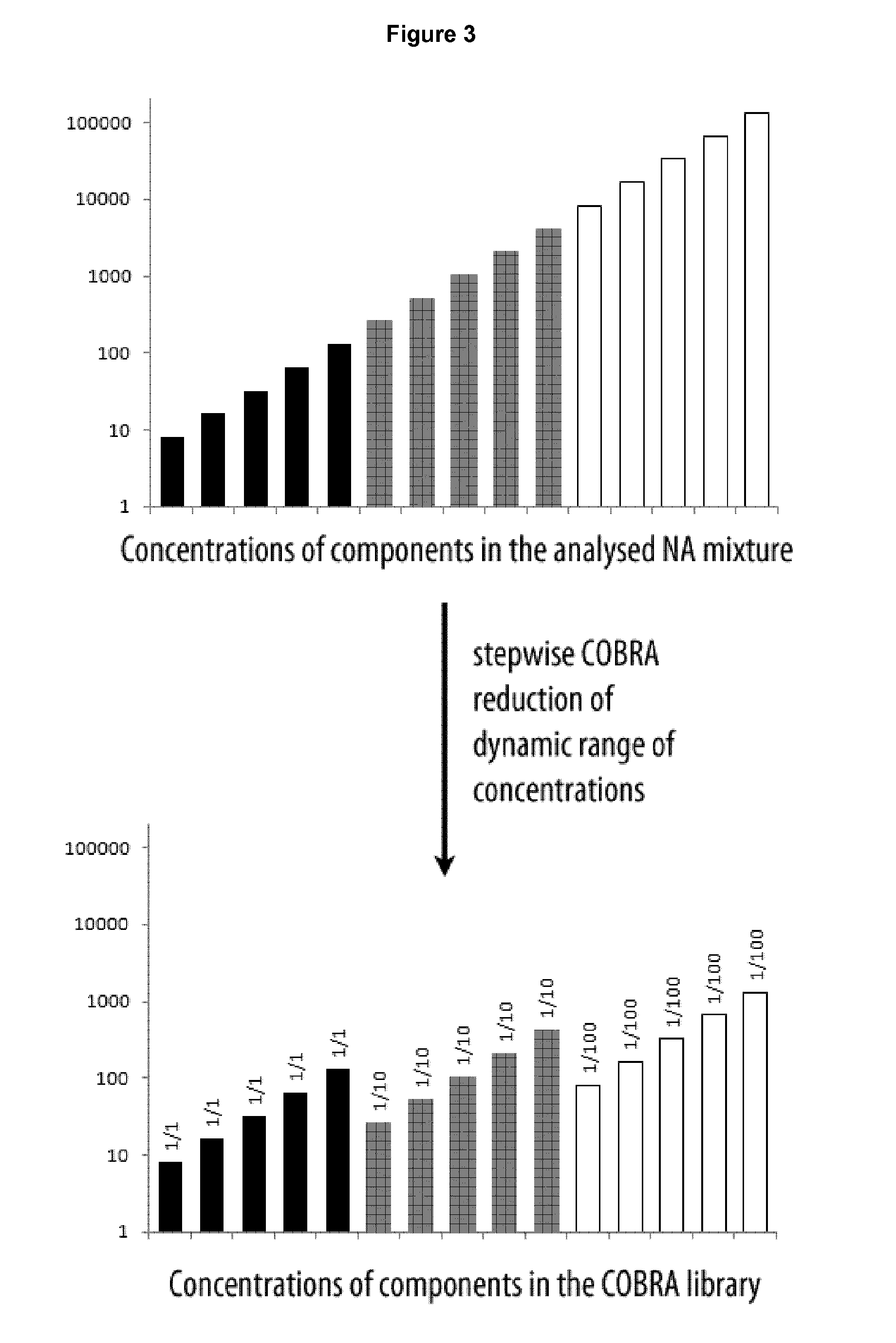Method of analysis of composition of nucleic acid mixtures
a technology of composition and nucleic acid, applied in the field of composition analysis of nucleic acid mixture, can solve the problems of excessive reliability in determining the concentration of abundant transcripts and insufficient reliability in concentrating rare transcripts
- Summary
- Abstract
- Description
- Claims
- Application Information
AI Technical Summary
Benefits of technology
Problems solved by technology
Method used
Image
Examples
example 1
Preparation of the Sequencing Library by Ligation of Detector Oligonucleotides on a cDNA Template
[0234]The scheme of the sequencing library preparation is shown in FIG. 11. After cDNA synthesis and RNA removal, selected loci are detected by cDNA-dependent ligation of locus-specific detector oligonucleotides. Three detector oligonucleotides are used for each locus. Flanking oligonucleotides contain regions corresponding to the sequencing library adapters: 5′-region of the upstream oligonucleotide and 3′-region of the downstream oligonucleotide.
[0235]Following ligation and getting rid of most of the non-ligated oligonucleotides the library amplification is performed. During amplification ligated molecules acquire full-size sequencing adapters.
[0236]Sequencing is used for detection, accounting and quality control of library molecules. If a sequenced molecule contains fragments belonging to different loci or fragments are ligated in the wrong order, it is excluded from the further analy...
example 2
Preparation of the Sequencing Library by Ligation of Detector Oligonucleotides on a RNA Template
[0237]T4Rnl2 RNA ligase enzyme can be used for ligation of detector oligonucleotides directly on the RNA template [2]. FIG. 12 shows the scheme of the corresponding protocol. For efficient ligation it is necessary that at least 3′-regions of upstream and middle oligonucleotides consist of ribonucleotides. Library molecules are obtained after reverse transcription of the ligated oligonucleotides.
[0238]Following ligation, getting rid of most of the non-ligated oligonucleotides and reverse transcription the library amplification is performed. During amplification ligated molecules acquire full-size sequencing adapters.
[0239]Sequencing is used for detection, accounting and quality control of library molecules. If a sequenced molecule contains fragments belonging to different loci or fragments are ligated in the wrong order, it is excluded from the further analysis.
example 3
Separate Reactions for Different Groups of Detector Oligonucleotides
[0240]Genes with “high”, “intermediate” and “low” levels of expression were selected, 10 genes in each group. Using the procedure described in Example 1 two sequencing libraries were prepared. When preparing the first library primers for all loci were used together. For the preparation of the second library reaction mixture was divided into three separate reactions, as shown in FIG. 13A.
[0241]It was found that the frequency of sequencing reads corresponding to genes with a “high” and “intermediate” levels of expression is reduced in the second library 100 and 10 times respectively.
PUM
| Property | Measurement | Unit |
|---|---|---|
| concentrations | aaaaa | aaaaa |
| affinity | aaaaa | aaaaa |
| concentration | aaaaa | aaaaa |
Abstract
Description
Claims
Application Information
 Login to View More
Login to View More - R&D
- Intellectual Property
- Life Sciences
- Materials
- Tech Scout
- Unparalleled Data Quality
- Higher Quality Content
- 60% Fewer Hallucinations
Browse by: Latest US Patents, China's latest patents, Technical Efficacy Thesaurus, Application Domain, Technology Topic, Popular Technical Reports.
© 2025 PatSnap. All rights reserved.Legal|Privacy policy|Modern Slavery Act Transparency Statement|Sitemap|About US| Contact US: help@patsnap.com



